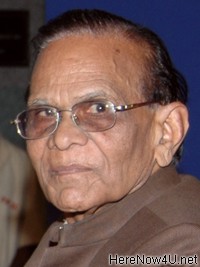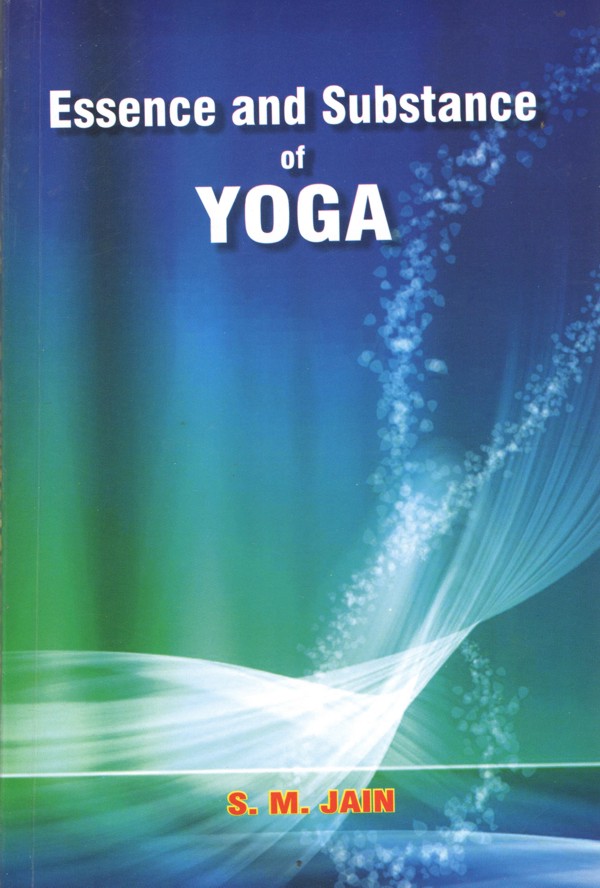The word ‘Yoga’ is from the root ‘yuj’ which means union. Union is a cosmic phenomenon as every constituent of the universe, every living organism from microbe to elephant and every atom is interlinked, interrelated and interdependent with each other. In cosmic chronology yoga is contemporary with cosmos, without beginning and end. The whole universe, evolving and changing, real and existing in myriad manifestations, defying all conjectures, fantasies, sermons and extortions by some major philosophies, rejecting it as “Maya”, “Mirage” and “Unreal”, is all because of Yoga - the union.
There is yoga (union) in an atom of subatomic quarks, gluons, neutrons, protons, electrons. Atoms unite to form molecules, organic and inorganic. Union of organic molecules form variety of life forms. Inorganic molecules unite to form objects big and small, minute particles to mountains, continents, planets and galaxies. Sun’s rays unite with waters of the sea, lakes, rivers etc. vaporising and uniting with particles forming clouds producing rains which in turn unites with earth facilitating plant life. The rain water ultimately goes back and unites with the sea. Male and female of life-forms unite to produce their off-springs. There are numerous other manifestations of union. The planets, stars and galaxies are all in unison to keep their positions and trajectories for mutual safe guards. It is all yoga (union) everywhere, every moment in every act, everything, every manifestation all over, all the time.
Union with all attendant means and objects is yoga.
According to yoga scholars yoga is of Indic origin. In Vedic stream it emanates from Rigveda. There is mention of yoga in Yajurveda in chapter 11 and hymns 1 to 5.
Atharvaveda (19.8.2) also contains specific details about breath (Prana) and its variations “Apana”, “Vyana” and “Udana”. In Yagvalkya Smriti, Mahabharat and Ahir-bundhaya Samhita “ Hiranyagarbha” the “Braham” is attributed as initiator of yoga:
Hiranyagarbhe yogasya vaktā nānya purātanaḥ |
In Jain stream of yoga Rishabhdeo or Adinath the first of 24 Tirthankaras is “Hiranyagarbha” and initiator of yoga:
Hiranyagarbhe bhagavān vṛṣabhevṛṣāmadhvajaḥ |
According to the Bhagavad Gita Krishna told yoga to Sun who told it to his son Vaivasvata Manu and Manu told to his son Ikshvaku. This chain continued for long but became extinct for a long time. Krishna told Arjuna that he was telling the mysteries of yoga to him:
This imperishable [doctrine of] yoga set forth to Vivasvat [the Sun]; Vivasvat told it to Manu; Manu communicated it to Ikṣvāku | | 4/1 | |
Thus being transmitted from one to another, this [doctrine] royal sages [rājarṣaya] knew. But this yoga, O harasser of foes, though great length of time, was lost to the world | | 4/2 | |
This same ancient yoga I have today set forth to you, for you are beloved by me and are my companion, and this is truly a most esoteric doctrine | | 4/3 | |
In Sankhya it is sage Kapila who initiated yoga around 600 B.C. Yoga and its practices may have been mentioned in various scriptures but the credit to collect, analyse, systematise and codify the scattered information must go to Patañjali who around 200 B.C. condensed the relevant information in 196 sutras or aphorisms. The eight sequential steps of yoga prescribed by him have by and large been adopted by subsequent yoga teachers in almost all streams with some modifications. Patañjali’s first step ‘Yama’ comprises five vows which are an integral part of Jaina code of conduct. Patañjali, though a Vedic Rishi adopted this Jaina tenet. He must have collected all that was available from all sources outside Vedic stream without any bias. The yoga practices were established in Egypt by Indian monks around 3rd – 4th century A.D. and in China during 525 A.D. and from there later in Japan. The Japanese word “Zen” is derived from Sanskrit word “Dhyanam”. In Christian tradition it was established by saint Antony and Francis but for fear that it would become religious tradition, it remained secretly hidden with a few wise saints. In recent years during a last few decades yoga has spread world wide without any bias of caste, creed and religion. This growing popularity of yoga is also because of the efforts of Indian Yoga teachers.
 S.M. Jain
S.M. Jain
